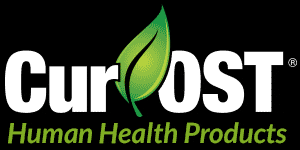Vitamin C is a substance that most are familiar with most information relating to the common cold. We know it is an important nutrient, being found in many fruit sources, but just how important is it? Does it really boost your immune system and prevent the common cold? Can it impact other health conditions, including cancer? Are you getting enough vitamin C each day? How much should you be consuming each day and how?

Vitamin C is a substance that we are all familiar with and often the first fruit acknowledged as being a source is the orange. In the days of pirates and ocean voyages for extended periods of time, the ship crew would often succumb to a disease called Scurvy, which is due to a vitamin C deficiency. In later voyages, in order to prevent the disease, ships were often readily stocked with various fruits in order to maintain adequate intake by the crew.
The daily recommendations for vitamin C intake are rather low, mainly targeting the minimum amount needed to prevent scurvy in the average adult or child. Despite the low recommended levels, this vitamin poses much potential for overall health and possible disease prevention. The concept of ingesting larger doses on a daily basis was explored by many physicians in the past with one notable individual being a chemist by the name of Linus Pauling.
Vitamin C is created internally in most animal and plant species with the exception of humans, apes, monkey, bats, guinea pigs and some birds and fish. It is however, required by all animals and plants in several enzymatic and metabolic reactions, whether if it is synthesized or not. If it is not synthesized, as in the case of humans, consumption through the diet or via supplementation is essential. The one exception to this is in animals that do naturally synthesize the vitamin, there is the concept of supply and demand, as in the case of critical disease or injury. In those situations, essentially supply is not meeting demand and the disease is essentially consuming more vitamin C that can be produced. This idea holds true for humans and primates as well, despite dietary or oral supplementation.
In humans, daily ingestion of vitamin C from the diet or supplementation is needed to meet requirements for health and the amount ingested can vary dependent upon the needs of your body. The more health ailments that are present, including joint pain, the higher the amounts of vitamin C that are required to fulfill demands.
What Is Vitamin C and How Is It Dosed?
Ascorbic Acid (vitamin C) acts as a reducing agent or antioxidant in the body, helping to neutralize free radicals and protect your cells. It is also a co-factor in the formation of collagen, which is a vital component of almost every supporting tissue in our body from the skin, hair and nails, to tendons and the extracellular matrix. Due to its relation to collagen formation, vitamin C is essential for proper wound healing and tissue repair. Vitamin C has also been shown to potentially enhance overall immune function and even impact circulating levels of histamines, as seen in allergies.
The RDA for vitamin C is 90 mg per day, while the dose needed to eliminate Scurvy is 45 mg. It has been noted that intakes of between 100-200 mg daily are associated with reduced risk of cardiovascular disease, cancer, and cataracts in people. Oral absorption is generally thought to be about 70-90% at normal levels, but actually drops to around 30% with increasing doses. Higher doses of vitamin C consumption have been associated with a decreased risk of cardiovascular disease, overall reduced risk of all risk mortality and increased life expectancy.
Vitamin C when taken orally has limitations on peak blood levels due to absorption, tissue accumulation and excretion. In other cases, there are limitations on blood levels due to increased demands as seen with certain diseases. Oral consumption is generally limited to 1-3 grams at a time, due to limited absorption and saturation of the intestinal tissue, which causes an osmotic type of diarrhea in most patients. High end consumption of vitamin C should be used cautiously in those patients with a genetic condition called glucose-6-phosphate deficiency and in patients with nocturnal hemoglobinuria. There is also a very low risk of oxalate kidney stone formation in those predisposed to the condition and a potential for worsening of iron overload in patients with hemochromatosis or those that receive constant blood transfusions.
Linus Pauling was one of the most noted researchers regarding ‘mega dose’ vitamin C therapy and advocated doses ranging from a daily intake of 1000 mg to over 50 grams per day. His recommendation was to split the daily dose into multiple doses, in order to maximize absorption over time. Pauling was an advocate for tailored dosing regimens for each patient, dependent on their condition, which was determined by bowel tolerance. The theory was that once the patient developed the osmotic diarrhea or abdominal distress associated with complete tissue saturation, he recommended that they then reduce that dose until the clinical signs were eliminated, which then determined their daily needs. For some patients, this dose was very high, while in others it was much lower. In cases of a more serious disease, such as with cancer, the dose was usually quite high. The explanation was related to be due to excessive consumption by the body due to the disease course itself, dictating an increased need.
Therapeutic Value of Vitamin C in Your Health
Vitamin C is involved in many cellular and enzymatic processes within your body. As mentioned above, it is a potent antioxidant helping to control oxidative stress and the damage inflicted upon cellular DNA. It is also invaluable for production of collagen, which helps in maintaining tissue strength, joint health, and wound repair. Vitamin C is also helpful for maintaining a healthy immune response.
Vitamin C has been found helpful in many aspects during and after surgical procedures to help the patient to recover from oxidative damage and encourage faster wound healing. It has also been used to help reduce pain, improve overall comfort and reduce the need for powerful pain medications. These findings are research supported and an aspect that we took full advantage of in our veterinary patients.
Linus Pauling was an advocate for vitamin C usage in cases of cardiovascular disease, especially atherosclerosis. Increased daily intakes of vitamin C, ranging from 200-500 mg /day are associated with a lower risk and mortality associated with cardiovascular disease. Vitamin C, taken in higher doses of 500-2,000 mg /day are also associated with a reduced total cholesterol, LDL and triglycerides, however HDL levels were not impacted. Higher serum levels of vitamin C were also associated with a reduced risk of stroke. Higher daily intakes of Vitamin C have also been shown to help dilate blood vessels, which may improve cardiac tissue circulation and potentially reduce blood pressures.
Vitamin C therapy brings new possibilities into cancer management. Malignant forms of cancer often spread or metastasize through the destruction of the extracellular tissue, which contains collagen. In many types of cancer, an enzyme called hyaluronidase, is often increased, which allows for collagen destruction in the tissue surrounding the tumor. Vitamin C helps to rebuild collagen and support the extracellular tiissue, but it has also been shown to inhibit hyaluronidase. High blood levels of ascorbate (ascorbic acid) have also been shown to be toxic to various cancer cell lines through the formation of hydrogen peroxide (H2O2) and formation of free radicals, which damage and kill the cancer cells.
According to the Linus Pauling Instititue, in the Nurse’s Health Study, pre-menopausal women with a family history of breast cancer that consumed an average of 205 mg/day of vitamin C, had a 63% reduced risk of breast cancer. In the Swedish Mammography Cohort, overweight women who consumed an average of 110 mg/day had a 39% lower risk of breast cancer as compared to the same group that consumed an average of 31 mg/day.
Other areas that has shown some interesting data include the use in other forms of cancer including lymphoma, stomach, colon and bladder cancer. Many of these forms of cancer, including stomach and bladder are often associated with carcinogenic nitrosamine compounds that are consumed via the diet and lifestyle factors. Vitamin C has been shown to inhibit the formation and activity of nitrosamine compounds, thus providing a means of protection against the cellular damage induced. In other areas of research, higher daily intakes of vitamin C have been connected with a decreased incidence of cataract formation and reduction of the clinical signs of gout, due to lowering of serum Uric Acid levels. Higher serum levels of vitamin C have also been shown to be beneficial in cases of osteoarthritis due to increased collagen deposition, reduction of proteoglycan degradation and even reduction of pain, which all may help to preserve joint cartilage.
It is to be noted that routine usage of Estrogen based birth control medications and aspirin have been shown to be associated with lowered serum levels of vitamin C, thus creating a need for supplementation especially in those individuals.
Intravenous Vitamin C High Dose Therapy
Considering the high importance of vitamin C in your overall health, and taking into consideration that some health conditions may benefit from a very high daily dose, sometimes it is difficult to achieve this benefit from oral dosing. One means of getting around the oral limitations is through the administration of vitamin C or ascorbate through intravenous injection. IV vitamin C therapy is able to achieve blood levels 70x that of oral dosing due to bypassing the limitations on absorption.
High dose vitamin C therapy has been explored for many years and initially became popular with physician Fred Klenner, based out of North Carolina, beginning back in the 1940’s. Dr. Klenner reported using doses up to 700 mg/kg of body weight in people to help manage many types of physical ailments ranging from allergic reactions, to shock to cancer, all with good results with improved patient outcome. Dr. Klenner was known to use vitamin C orally, by injection into the muscle (I.M) or via the intravenous route (I.V.).
In later years, Dr. John Myers pioneered the use of high dose vitamin C in combination with vitamins and minerals. The Myer’s cocktail was soon a popular treatment regimen and still used today in many non-traditional practices. This formulation often delivers high doses of vitamin C and other macronutrients in an IV solution to the patient over a course of a few hours.
Intravenous vitamin C doses can range from 10-500 grams, dependent on the patient’s size and condition being managed. As you can see, the dose level is much higher than those used traditionally via the oral route. Through the use of high doses of vitamin C intravenously, one is able to achieve very high serum levels that can demonstrate profound effects on cellular function. In terms of cancer therapy, there are many reports of IV vitamin C usage with good outcomes in terms of patient recovery and overall health. The high vitamin C serum levels achieved have been shown to actually have a pro-oxidant effect, instead of antioxidant impact, targeting various cancer cells and increasing cell death but not impacting normal, healthy cells.
As a veterinarian, we often used high dose IV vitamin C therapy in our patients, including pets and horses. For a short period of time, we followed our companion animal surgical patients and found, through the use of blood assays, that many of these patients became unstable, while under anesthesia, with high levels of free radicals and depleted antioxidant scores. This finding was more common in older patients, but also found in younger pets undergoing routine procedures. In the more serious cases, such as acute traumas or other illness, the levels were more noticeable and often correlated with poorer recovery rates and outcomes. It soon became a normal procedure to administer high dose IV vitamin C to those patients while undergoing a surgical procedure. In the end, the patients seemed to do much better throughout the procedure but also appeared to recover much easier for the long term with better outcomes.
Vitamin C and Your Health
We live in very stressful times and that stress can contribute to a host of health problems. As your stress level climbs, the demands for nutrients in the body rise, which include vitamin C. It really is rather obvious why some people seem to be more prone to the common cold than others, and even why some have a hard time shaking that cold, especially in the winter time. Your body could be craving vitamin C.
It is almost next to impossible to determine if you are taking in enough vitamin C without analyzing your diet fully or having a blood assay performed to check your level. One other option is to check your urine levels, usually first thing in the morning, using vitamin C urine sticks which can be purchased online. The difficult aspect to this is that you need to remember that vitamin C has a relatively short life once inside your body. So, consuming some oranges or other fruits in the morning is good, but it may not provide enough vitamin C, and for a long enough period of time, to provide for the challenges of your day. Checking your levels is good, but may not tell the complete story. Supplementing to ensure adequate levels is usually best, usually starting at a lower dose and more frequently.
If you suffer from ongoing colds, predisposition to being sick, have bleeding gums, tooth problems, or other clinical ailments, these may all be warning signs that your vitamin C intake is too low.
Vitamin C is an important nutrient found in the diet at low levels, but can potentially help to impact health when the daily intake is increased. You have to remember that there is often a supply and demand situation going on as well, implying that one set dose may not provide adequately for your body each and every day. In times of severe or chronic illness, supplies can be quickly depleted, which then can negatively impact your health. Through supplementation, levels can be increased and demands can be met with very little risk of toxicity. The ultimate question lies in the dose utilized. Taking into consideration the concept of bowel tolerance described by Pauling, this is an individual based situation and hard to determine exactly by a general recommendation.
Options for Vitamin C:
Author: Tom Schell, D.V.M, CVCH, CHN


